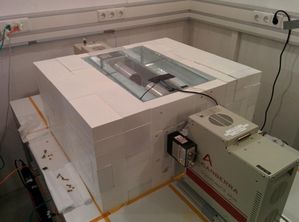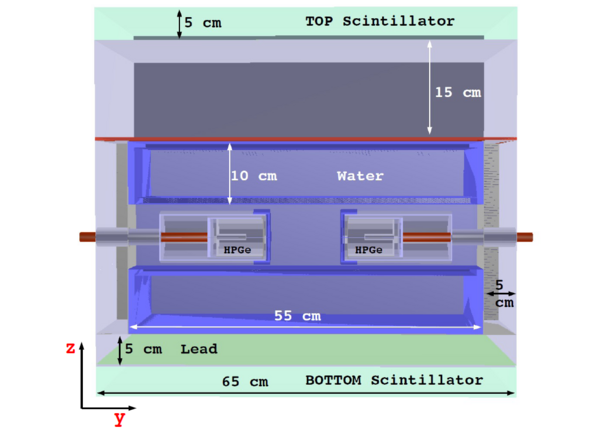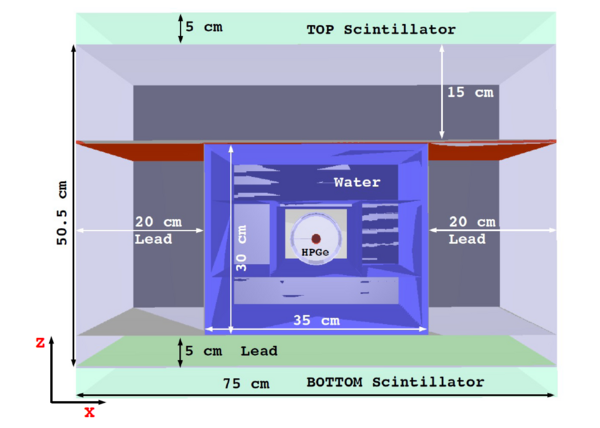The MINIDEX setup was designed to study muon-induced neutron production.
Natural high energy muons are mainly produced as products of interactions of very high energy cosmic rays, predominantly protons, in the upper atmosphere. These muons penetrate the earth very deeply and some of them even reach the deepest laboratories. They can interact with materials in and around an experiment. The resulting showers contain neutrons. And these neutrons can create background events, which are very difficult to identify because they consist of localised energy depositions looking a lot like the signal.
The rates of muon-induced neutron production in heavy materials are not well known. But they are important when calculating background rates in underground laboratories, where the muons interact in the rock around the experimental halls and in the experimental structures and shields. Materials commonly used are lead, copper and steel.
MINIDEX uses walls of such heavy metals to tempt muons to interact. The neutrons entering the inner volume of MINIDEX are moderated and caught in water. The resulting characteristic 2.2 MeV gammas are recorded by two commercial germanium detectors. The detectors are electrically cooled and, thus, the experiment can run maintenance-free and remotely controlled in the Tübingen underground lab.
Results on muon-induced neutron production in lead were published. The production rate was found to be three time larger than expected from standard Monte Carlo simulations. Data with copper as the target material are being analysed. It is planned to run MINIDEX for many years and probably also at different depth.
Further information on the MINIDEX group
Phone number: +49 89 32354-extension
| name | function | extension | office | |
|---|---|---|---|---|
| Gooch, Christopher | Engineering | christopher.gooch | 242 | A.1.63 |
| Liu, Xiang, Ph.D. | Senior Scientist | xiang.liu | 415 | A.1.65 |
| Majorovits, Béla, PD Dr. | Senior Scientist | bela.majorovits | 262 | A.2.71 |
| Schulz, Oliver, Dr. | Senior Scientist | oliver.schulz | 521 | A.2.61 |
Muon-induced neutrons in lead and copper at shallow depth.
R.Kneissl et al., Astropart. Phys. 111, Sept. 2019, 87-99
The muon-induced neutron indirect detection EXperiment, MINIDEX
I. Abt et al., Astropart. Phys. 90, 1 (2017). DOI: 10.1016/j.astropartphys.2017.01.011


